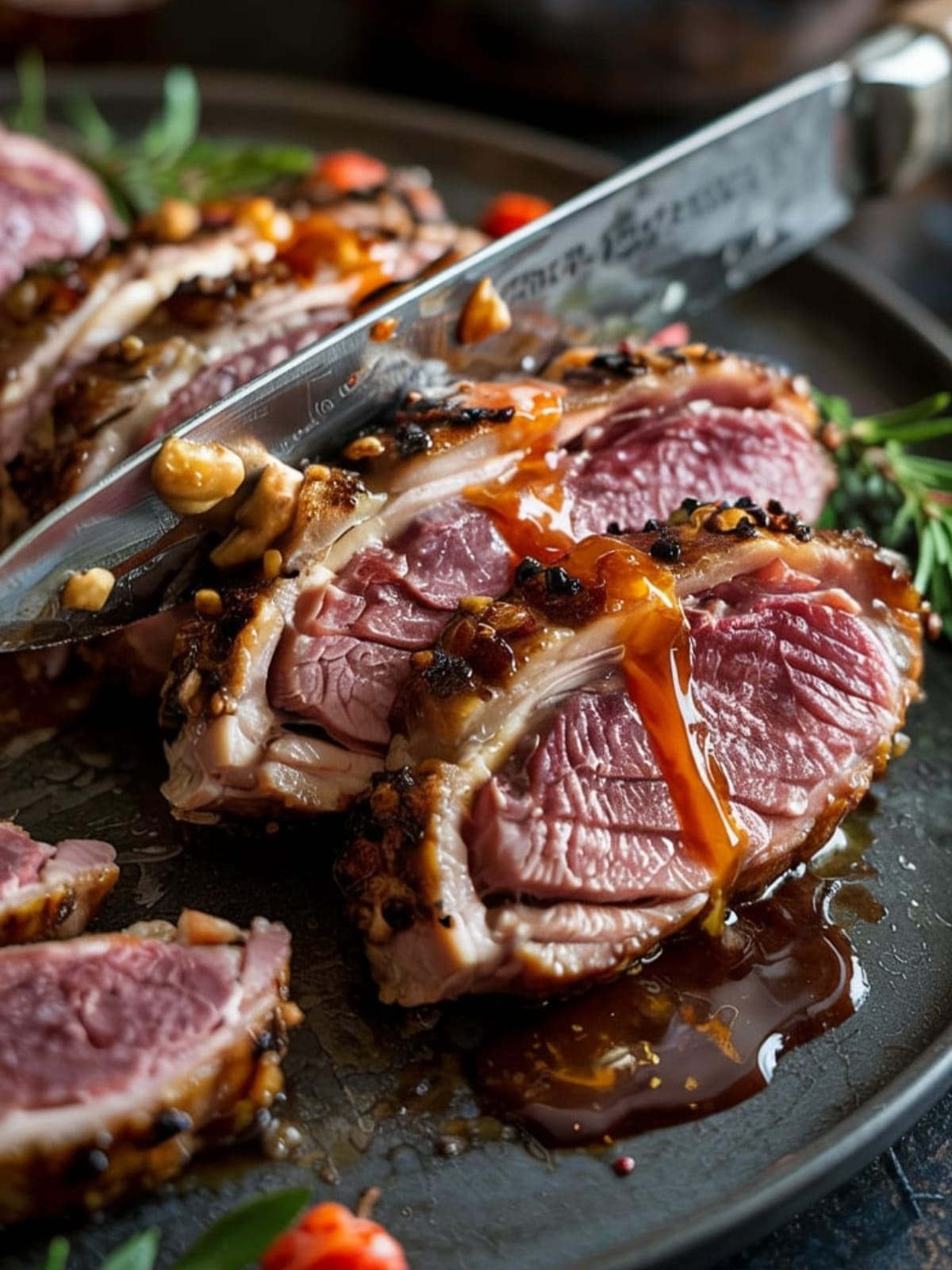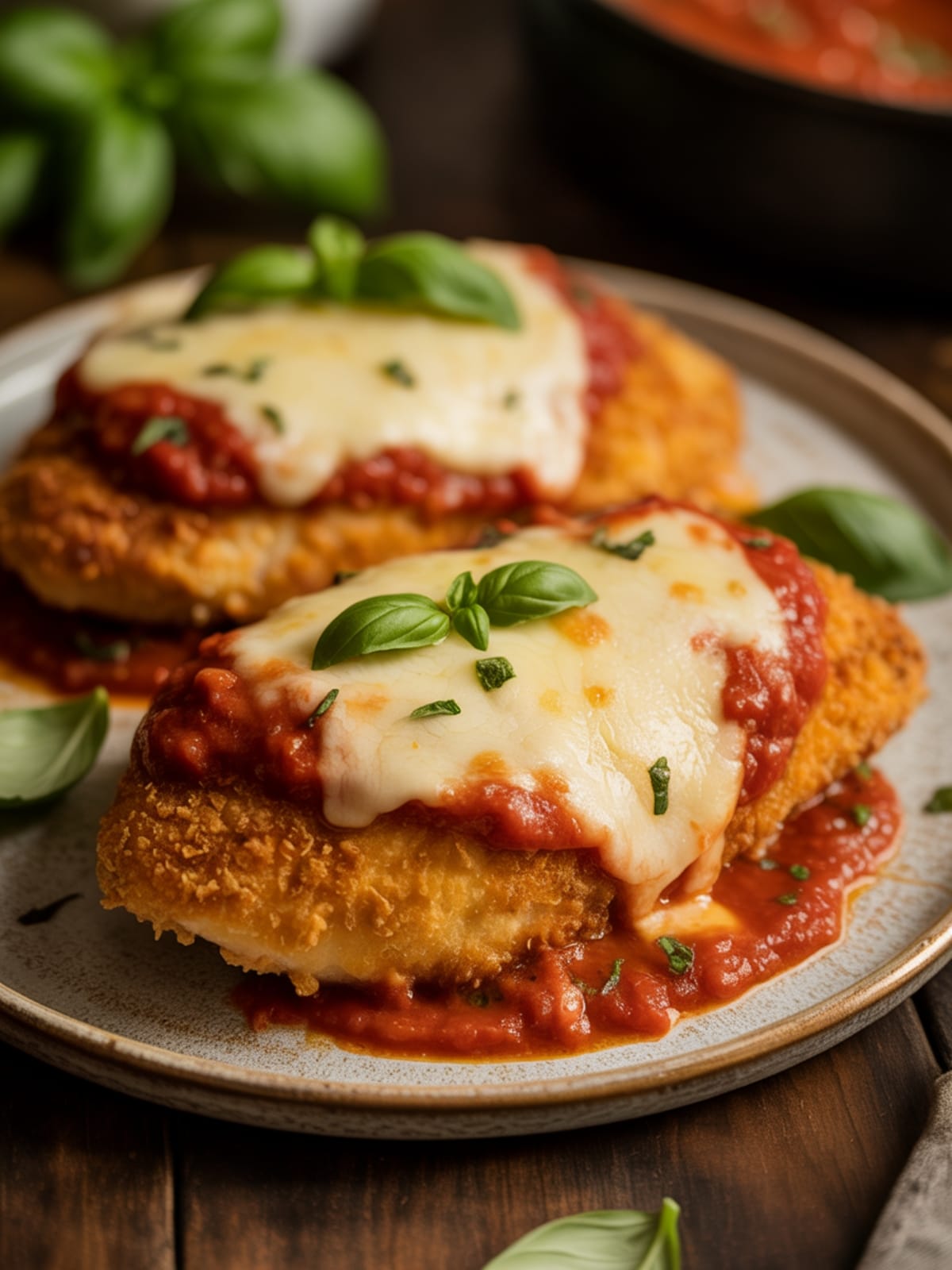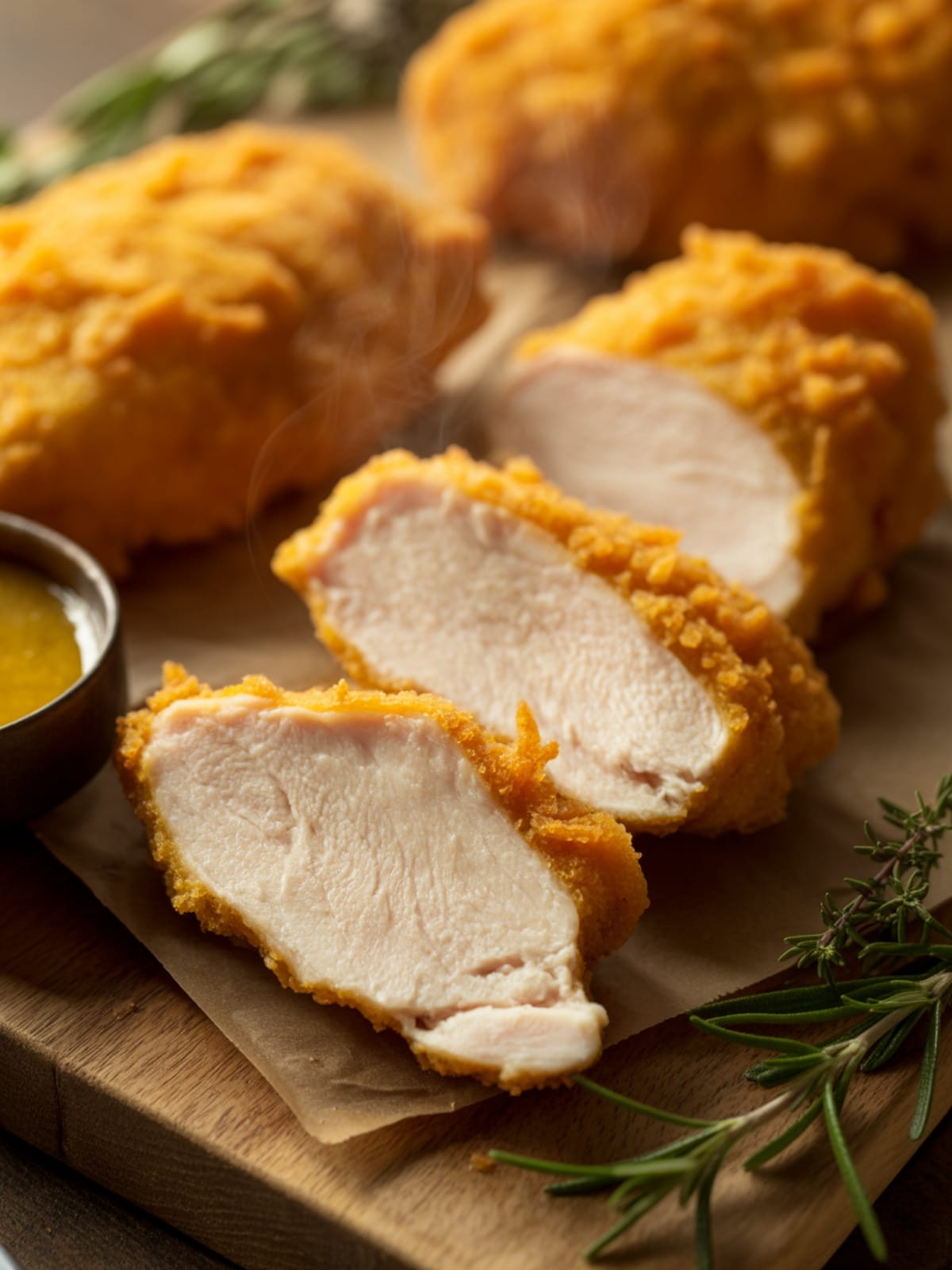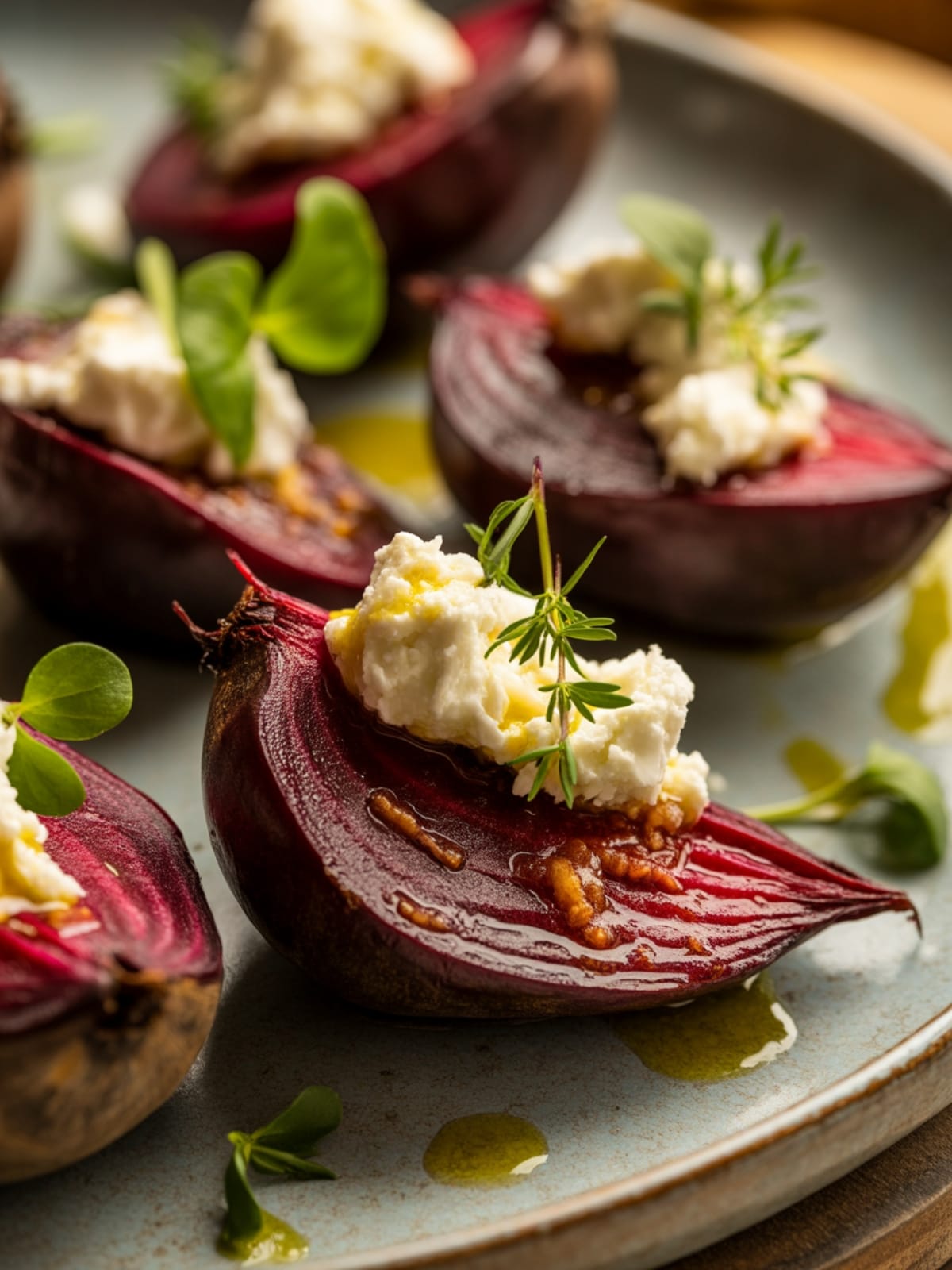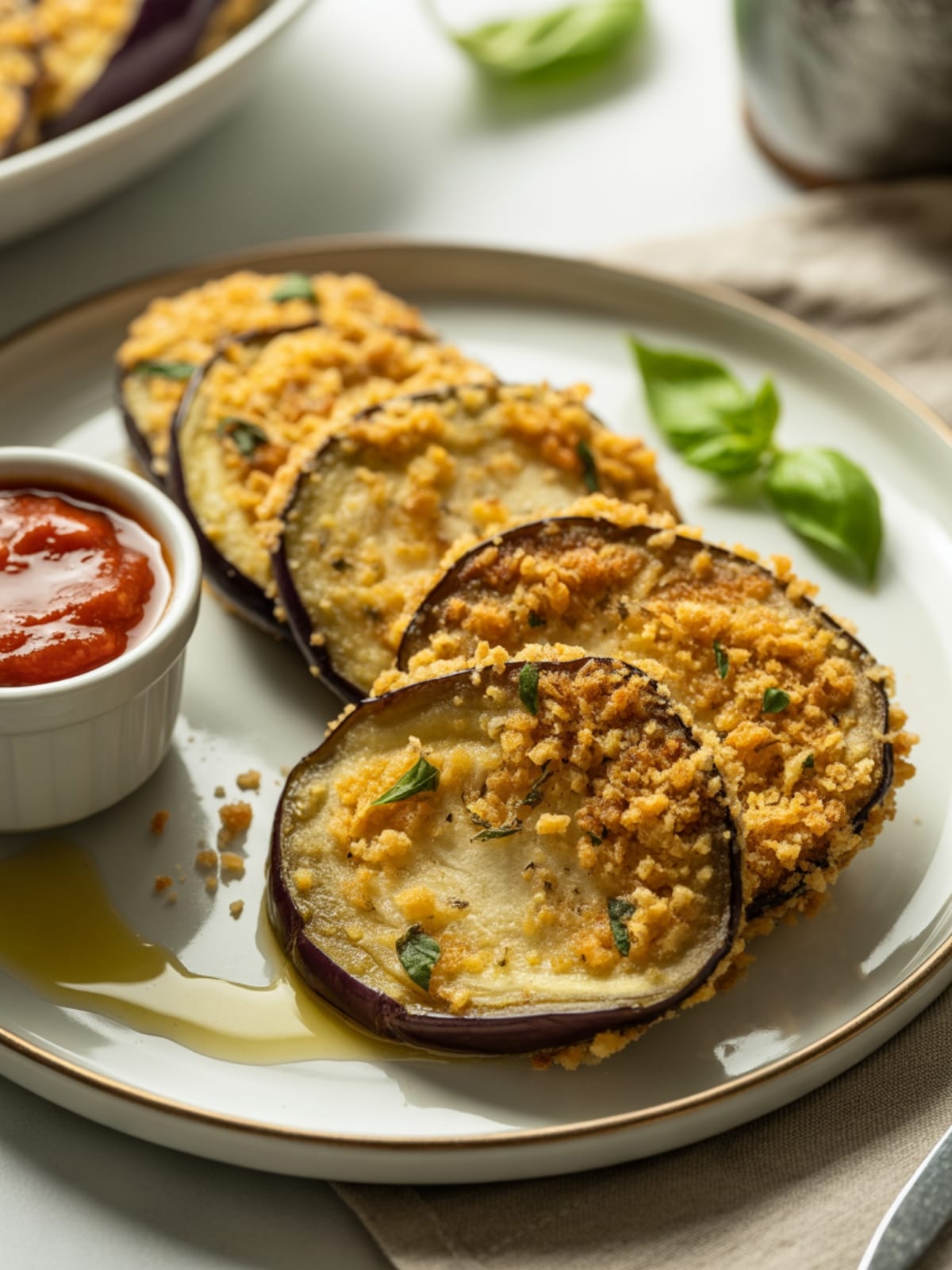So, you want to impress someone with your culinary skills but don’t want to admit you’ve been surviving on cereal for dinner three nights this week? Orange-glazed duck breast is your new secret weapon – it sounds fancy, tastes amazing, and is way easier than it has any right to be.
Why This Recipe is Awesome
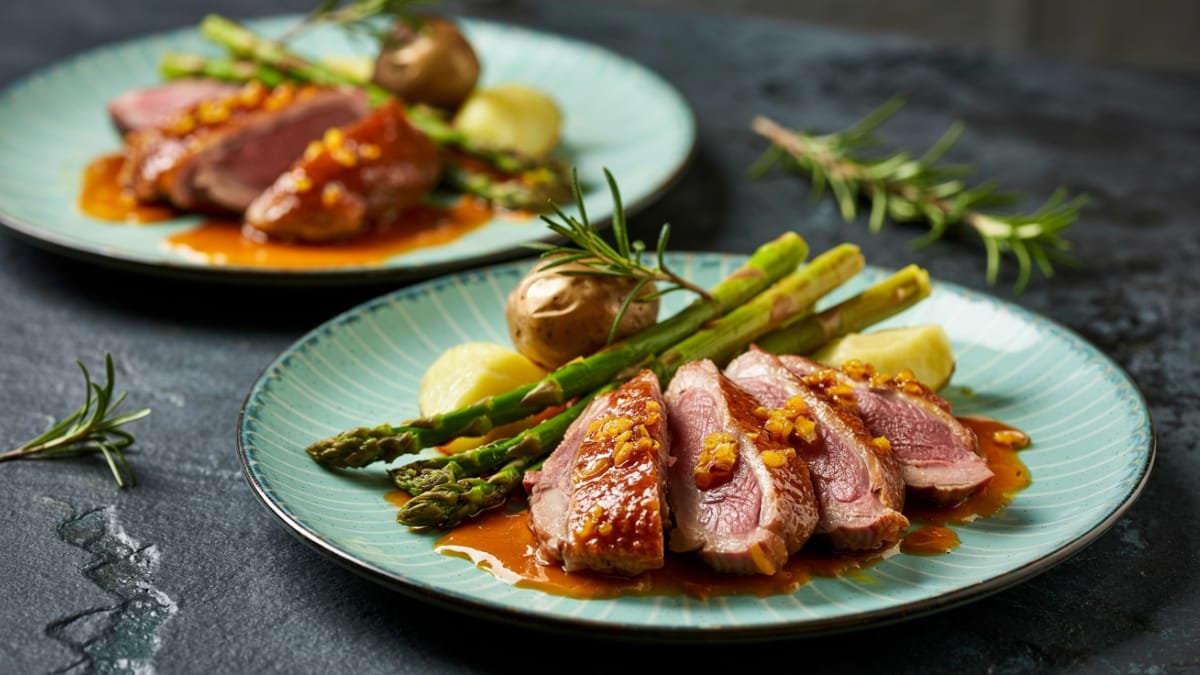
Let’s be honest – serving duck makes you look like you know what you’re doing in the kitchen, even if you usually burn toast. It’s like the culinary equivalent of wearing glasses to look smarter. This orange-glazed duck breast hits that perfect sweet-savory balance that makes people go “mmm” involuntarily. The skin gets crispy (because crispy duck skin is basically food religion), while the meat stays juicy and tender. And that orange glaze? It’s so good you’ll want to lick the plate when nobody’s looking. I won’t judge.
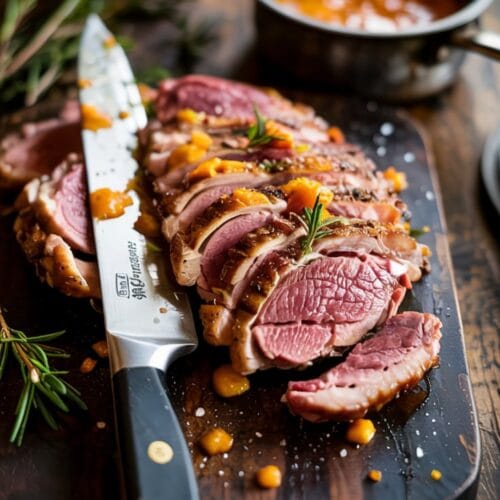
Orange-Glazed Duck Breast
Ingredients
- 2 duck breasts about 8 oz each, skin on (because skinless duck breast is a crime)
- Salt and freshly ground black pepper
- 1 tablespoon vegetable oil only if your duck isn’t fatty enough
For the glaze
- 1 cup fresh orange juice from actual oranges, not that carton stuff if possible
- 2 tablespoons honey
- 2 tablespoons soy sauce
- 1 tablespoon orange zest
- 1 garlic clove minced
- 1 teaspoon fresh ginger grated
- 1 star anise pod optional, but makes you feel extra fancy
- 1 tablespoon butter the secret weapon of restaurant chefs everywhere
Instructions
- Take duck breasts out of the fridge 30 minutes before cooking. Cold duck straight into a hot pan is a recipe for tough, sad meat.
- Score the skin in a diamond pattern with a sharp knife, being careful not to cut into the meat. This helps the fat render and creates maximum crispiness. Think of it as giving your duck a fancy tattoo.
- Season both sides generously with salt and pepper. Don’t be shy – duck can handle it.
- Place duck skin-side down in a cold (yes, cold) heavy skillet. Turn heat to medium and let it slowly heat up. This is the secret to rendering fat properly.
- Cook skin-side down for about 8-10 minutes until the skin is golden brown and crispy. Pour off excess fat as it accumulates. (Save that liquid gold for roasting potatoes later!)
- Flip the breasts and cook for another 4-5 minutes for medium-rare (internal temperature of 130-135°F).
- While the duck cooks, make the glaze. Combine orange juice, honey, soy sauce, orange zest, garlic, ginger, and star anise in a small saucepan.
- Bring the glaze to a boil, then reduce heat and simmer until it thickens to a syrupy consistency, about 10 minutes.
- Remove star anise and whisk in butter to make the sauce glossy and rich.
- Transfer cooked duck to a cutting board and let it rest under foil for 5 minutes. Don’t skip this step unless you enjoy watching all those delicious juices run away from your plate.
- Slice duck breasts thinly against the grain and fan them out on plates. Drizzle generously with the orange glaze.
Notes
- Duck breast is best served medium-rare. If you cook it to well-done, it might as well be expensive leather.
- The rendered duck fat is liquid culinary gold. Save it for roasting potatoes or vegetables. Your taste buds will write you a thank-you note.
- Pat the duck skin completely dry before scoring to achieve maximum crispiness.
- You can make the orange glaze ahead of time and gently reheat when needed.
- Using a cold pan to start cooking the duck is counterintuitive but gives you that restaurant-quality crispy skin.
Calories & Nutritional Info
- Calories per serving: Approximately 450-500 calories per breast
- Protein: 35g
- Fat: 30g (mostly from the skin, but it’s the good kind… sort of)
- Carbs: 15g (mostly from the orange glaze)
- Contains significant amounts of iron, zinc, and B vitamins
- Not exactly diet food, but worth every calorie
Common Mistakes to Avoid
- Not scoring the skin – Unless you enjoy flabby, chewy duck skin. No one does.
- Cooking cold duck – Always let it come to room temperature first for even cooking.
- Starting with a hot pan – Counter-intuitive, but starting with a cold pan helps render the fat properly.
- Overcooking – Duck breast should be pink inside. It’s not chicken; it won’t kill you.
- Skipping the resting period – Cut into it too soon, and watch all those precious juices escape. Give it a moment to collect itself.
- Being stingy with the glaze – More is more here. Go wild.
Alternatives & Substitutions
- No fresh oranges? Use good-quality orange juice and add a bit more zest if you have it.
- No star anise? A cinnamon stick or a pinch of five-spice powder works too.
- Honey alternatives: Maple syrup or brown sugar will work, just adjust quantities to taste.
- Soy sauce substitutes: Tamari or coconut aminos for a gluten-free option.
- Cooking method alternatives: You can also cook duck sous vide at 131°F for 2 hours before searing the skin for the perfect doneness.
- Vegetarian version: Just kidding. This is a duck recipe.
FAQs
Can I cook duck breast from frozen?
Technically yes, but please don’t. Thaw it properly in the refrigerator overnight. Cooking from frozen will give you a sad, unevenly cooked duck that nobody deserves.
What should I serve with orange-glazed duck?
Something to balance the richness—think roasted vegetables, a bitter green salad, or wild rice. Or go full French with pommes Anna or dauphinoise potatoes if you’re feeling particularly fancy (or particularly hungry).
How do I know when the duck is cooked to medium-rare?
An instant-read thermometer should read 130-135°F. Or do the finger test—it should feel like the base of your thumb when you touch your thumb and middle finger together. Too complicated? Just get a thermometer.
Can I make this recipe with duck legs instead?
Duck legs need a different cooking method altogether—they’re better braised or confit-ed. Stick with breasts for this recipe unless you enjoy tough, chewy outcomes.
Why is my orange glaze not thickening?
Patience, young padawan. It takes a good 10 minutes of simmering. If you’re still having issues, mix 1 teaspoon of cornstarch with 1 tablespoon of cold water and add it to the sauce.
Is duck hard to cook for beginners?
Not at all! Duck breast is actually very forgiving—as long as you don’t overcook it. The biggest learning curve is getting that skin crispy, but the cold-pan technique makes it nearly foolproof. Sorry, I mean… extremely achievable.
Final Thoughts
There you have it—a duck breast recipe that’s impressive enough for a date night but easy enough that you won’t have a kitchen meltdown. The combination of crispy skin, tender meat, and that sweet-tangy orange glaze is seriously hard to beat. So go ahead, channel your inner fancy chef and make someone think you’re way more sophisticated in the kitchen than you actually are.
